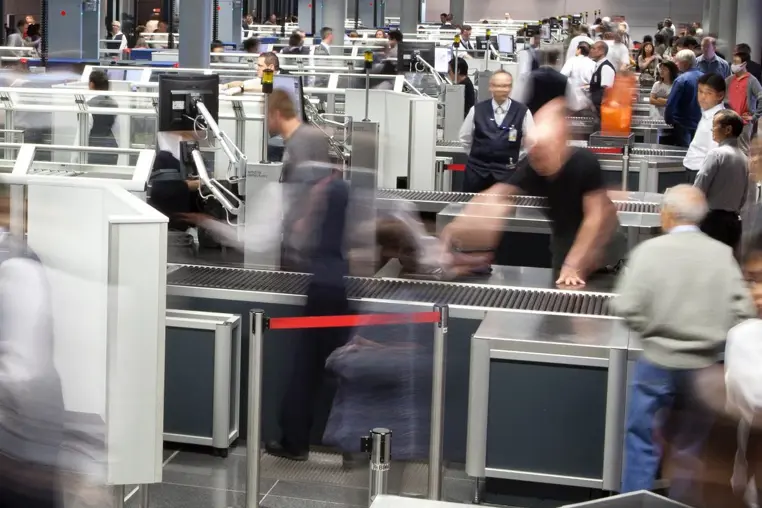The growth of passenger traffic is relentless and, despite many recent developments designed to drive efficiencies at the checkpoint, airports are already asking if the security process can be further streamlined and made significantly faster. So what are the limits of current and emerging technology and how could it evolve whilst maintaining required security levels?
There are several different constraints limiting the throughput rate of a lane – not least image analysis time and belt speed – the latter is typically around 0.2m/sec on current X-ray scanners. However, hold baggage systems (HBS) have faster 0.5m/sec belts and for some time have also deployed remote screening to improve image analysis productivity. Remote, or central, screening is now available at the checkpoint so what would happen if it was combined with the faster HBS belt speed?
Potentially, the lane could handle over 2,000 trays/hour, or 1,000 passengers/hour assuming they each have two trays – more than double the throughput offered by even the most efficient of today’s options. These high speed designs would ideally include advanced detection systems to reduce the number of images being sent through for analysis; and also allow liquids and electronic devices to be scanned inside the hand baggage to cut down the number of necessary trays.
This level of performance could significantly reduce the number of lanes required to meet peak periods and therefore deliver both increased efficiency and cost savings.
But……
We have to consider how this this would affect passengers and what else would need to change.
Firstly, if hand luggage and personal belongings are being processed much quicker, the passenger screening rate would also need to improve in order to keep up. Walk through, millimetre wave technology has already taken people scanning forward, but it may need to be developed even further.
Next, what happens to trays arriving at the end of the checkpoint much faster than the passengers? They could be stored ready for collection via a carousel or even a personalised reclaim system based on the boarding card. Collecting baggage on arrival at your destination is already a potential bottleneck which passengers avoid by taking only hand luggage, so how would yet another reclaim process be received?
In practical terms, these measures could work but emotionally, how many people would be happy to see their wallets, key, laptops, handbags or even shoes whisked out of sight for any length of time? And what about items such as baby buggies and walking sticks – without them some people would struggle to reach the reclaim area if it is away from the lane?
Logistically, space, facilities and time would have to be provided for this process and may create a new bottleneck to cancel out any benefits – would people just be queuing here instead of at the start of the checkpoint?
There are many questions to answer but, in principle, the concept boils down to only two: Is there really a need for a high speed checkpoint and if so, what type of innovation would be required to make it a reality?

